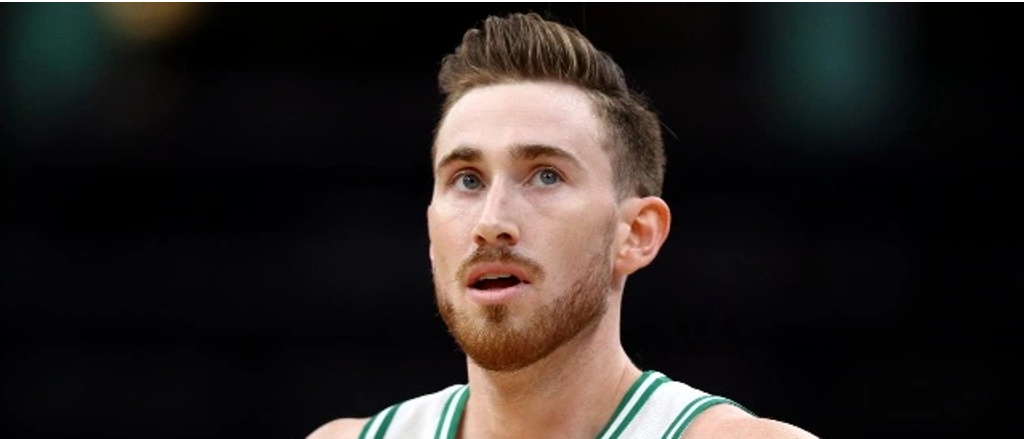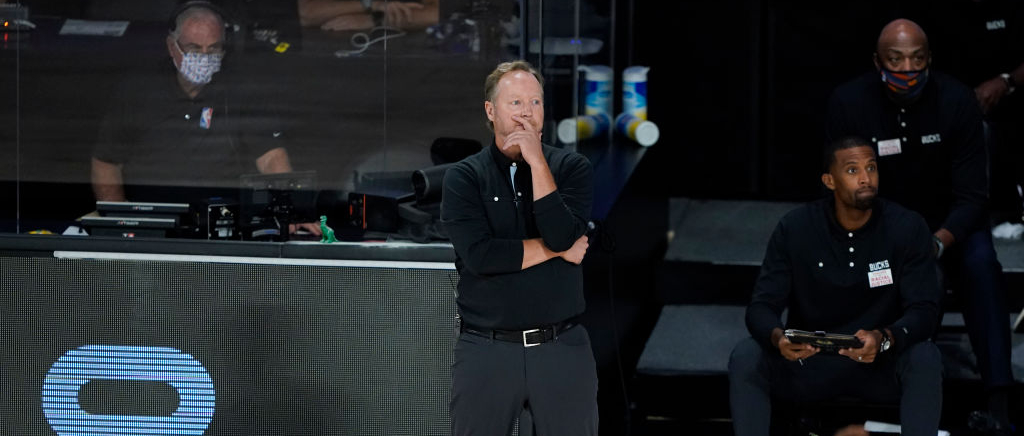As has been the case for any NBA-related endeavor over the past 8.5 months, this year’s offseason cycle, headlined by free agency and the Draft, unfolded amid distinct circumstances. Rather than a pair of mid-summer events that reshape many team’s outlook, things unfolded in the heart of winter and the NBA’s title picture looks fairly similar to last year. Certain playoff contenders like the Philadelphia 76ers, Phoenix Suns, and Portland Trail Blazers landed difference-making splashes via trade this month, but the Los Angeles Lakers’ flurry of moves in recent weeks have them still atop the league and eyeing a second consecutive championship.
Despite the largely stagnant top tier, at least with regard to its members, various teams, players and organizations have starkly benefited or been afflicted by November’s action. In simpler terms, some are winners and others are losers, though such concrete terms may appear foolish with the asset of hindsight down the road. The four aforementioned teams would all fall into the Winners category, but we’ve explored them in detail already. Here, we’ll take a look at the rest of the league and who’s had a good and bad offseason.
Winners

Gordon Hayward and LaMelo Ball
After weeks — months, maybe? — of rumors and speculation about how Gordon Hayward would approach his $34.2 million player option with the Boston Celtics, the veteran swingman chose to decline that option and will ink a four-year, $120 million deal with the Charlotte Hornets, according to ESPN’s Adrian Wojnarowski. The new deal is fully guaranteed and means, from the 2017-18 season to 2023-24 season, he will earn $213.6 million.
That’s a lot of cash for a one-time All-Star, though, in fairness, his ankle injury in 2017 dramatically altered the trajectory of his career and it’s reasonable to project he might’ve added more All-Star nods to his tally if fully healthy. Regardless, Hayward enters a new environment where he’ll be given more offensive freedom and responsibility.
For the Hornets, Hayward provides stability and secondary creation next to their recently acquired franchise center piece, LaMelo Ball, the third overall pick of the 2020 NBA Draft. Ball is a virtuoso passer with a slippery and functional handle, but the upper echelon of his scoring equity remains to be seen. Hayward does not inhibit the exploration of his initiating upside, but will give Ball a release valve on the wing who can take pressure off when necessary.
As Hayward ages and Ball blossoms, the former can step further aside, if needed. The deal remains an overpay, but signing someone to help facilitate the development of Ball is paramount and shrewd. Perhaps that was not the motivation and Charlotte merely wants to chase the eighth seed, but this signing is an obvious win for Hayward and an understated one for Ball as well.
Trae Young
Since selecting Trae Young in 2018, the Atlanta Hawks have been prominent players on the trade market in an effort to surround their offensive superstar with a winning core. Young has not been quiet about his desire to win as quickly as possible and the Hawks have aimed to grant this request, wheeling and dealing assets and players for guys who are seemingly primed to help manifest Young’s wishes. They dealt a pair of top-20 picks on Draft night in 2019 to move up and select De’Andre Hunter fourth overall, perceiving him as a burly, versatile two-way wing who pairs well alongside Young. They acquired Clint Capela in February in an attempt to anchor their defense and provide another complementary pick-and-roll partner for Young.
The latest opportunity to acquiesce Young arrived this offseason, as Atlanta entered free agency stocked with cap space and has not hesitated to spend it. Headlining the Hawks’ spending spree is the signing of Danilo Gallinari to a three-year, $61.5 million contract. Gallinari becomes Atlanta’s second-best shot creator, particularly adept in isolation and a strong catch-and-shoot spacer from his forward spot, and will alleviate some burden from Young, who has overwhelmingly acted as the table-setter and primary scorer during his tenure.
Atlanta also inked former Sacramento Kings guard Bogdan Bogdanovic to a four-year, $72 million offer sheet/contract, surrounding Young with a crafty perimeter handler who also functions comfortably off the ball. Bogdanovic has limitations, but he is a savvy facilitator and shooter. His arrival further heightens this squad’s offensive potency. Next month, assuming John Collins is not traded, the Hawks will trot out a Young-Bogdanovic-Gallinari-Collins-Capela starting unit, assuredly capable of nabbing the Eastern Conference’s eighth on the back of a very good offense.
It’s probably not the level Young references when he talks about his desire to win, but it’s a notable improvement from the mid-lottery teams he’s been the face of early in his career. I’d wager adding win-now guys like Capela, Gallinari, and Bogdanovic accelerates the timeline too far forward and inhibits the Hawks’ chances of constructing a core through the Draft genuinely worthy of consistently deep playoff runs. But this new roster makes clear the pull Young wields within the organization. Atlanta’s offseason signifies an acknowledgement of Young’s demands and represents a step in actualizing his preference to win immediately.
Blake Griffin’s trade suitors
If a strategy to roster construction were a glaring signal to the availability of a star, the Detroit Pistons’ actions in recent weeks have to suggest Blake Griffin is on the trade market. Between the Draft and early days of free agency, Detroit fortified its frontcourt in a prominent way, preparing itself for a life without Griffin. Top-20 picks were invested in power forward Saddiq Bey and center Isaiah Stewart. Jerami Grant, who is maximized at power forward, was the team’s shiny free-agent pickup, signing a three-year, $60 million contract. The signings of Mason Plumlee and Jahlil Okafor round out the center depth chart.
So, since Nov. 18, five big men have been added to the roster, three of whom were on the receiving end of significant Draft or financial capital. Griffin is owed $74 million over the next two seasons. There’s a chance his physical decline continues moving forward and he cannot reproduce his All-NBA level from 2018-19. But that version of Griffin is a top-30 player, the sort of star who can reshape a team’s short-term vision. He probably won’t require a huge haul, given his contract and injury history. The intrigue of a playmaking, floor-spacing star forward, though Griffin’s health is a sizable question mark, has to be enticing for some suitors, whose ears might’ve perked up in response to the Pistons’ roster-building decisions this month.
Losers

RJ Barrett’s development
Watching RJ Barrett’s rookie season last year was challenging. He did not have the floor-spacing to augment his slashing prowess, nor the truly competent point guard/initiator to steer the offense and ensure he was not saddled with an overextended handling burden. Neither issue has been remedied this offseason. The New York Knicks selected Obi Toppin eighth overall in Wednesday’s Draft, pairing Barrett with a dominant lob threat, viable pick-and-pop big and gifted passer. Toppin is not an offensive hub or the elite shooter to command defensive respect on a possession-by-possession basis. He is a complementary player, just like Barrett, and now, neither, has the initiator to amplify their skillsets.
With guys like Killian Hayes and LaMelo Ball off the board, New York was handcuffed to an extent — even if a guy like Kira Lewis, a snug fit next to Barrett, would’ve been a sharper selection. The Knicks’ later selections, however, signified a lack of willingness to land that ball-handler. With Malachi Flynn and Desmond Bane both available, New York opted for Immanuel Quickley, an undersized off-ball guard who brings the shooting but not the handling for Barrett. Free agency did not offer a reprieve, either, producing notable acquisitions of Austin Rivers, Elfrid Payton (new deal, same team), Alec Burks and Nerlens Noel, none of whom should be entrusted to conduct the offense or can be expected to simplify the offense for Barrett.
Retaining long-term cap space and flexibility is understandable and wise, and the Knicks avoided an ill-advised run of lavish signings, unlike previous summers. Yet the roster is still scarce on guys who will help their third overall pick from last year’s Draft and that is worrying for his developmental track, as well as the franchise’s perceived view of how to accommodate it.
Milwaukee Bucks
Earlier this month, the Milwaukee Bucks appeared as though they’d perhaps thoroughly addressed their perimeter scoring/creation deficiencies, landing both Jrue Holiday and Bogdan Bogdanovic via separate trades. Holiday is a Buck, but the Bogdanovic deal fell through because, well, he didn’t agree to a sign-and-trade, a rather important component of such a deal. Instead, Milwaukee sought to replace him with depth, signing guys like DJ Augustin, Bobby Portis, and Bryn Forbes. Beyond the tenet of high-end talent trumping depth, the real kicker is in solidifying the back-end of the rotation, the Bucks have likely enabled head coach Mike Budenholzer to, once again, extend too far down the bench in critical playoff series and short-circuit the minutes of his stars.
Budenholzer’s rotational preferences are not the sole factor for Milwaukee’s repeated postseason demise. Giannis Antetokounmpo needs to establish more counters as a scorer. Eric Bledsoe, who was sent to New Orleans as part of the Holiday trade, regressing from very good starter to nearly unplayable guard is to blame as well. Utilizing Giannis more as a roller and big man offensively would also help. Holiday’s advantages as a creator over Bledsoe will benefit the Bucks and potentially put them over the top when it counts, but missing out on Bogdanovic shrinks their margin for error during a season of vital importance for the franchise. Of course, should Antetokounmpo still put pen to paper on a supermax extension this offseason despite the failure to land the plane on the Bogdanovic deal, the Bucks can swiftly jump into the winners category simply by proxy of locking in the reigning two-time MVP.







